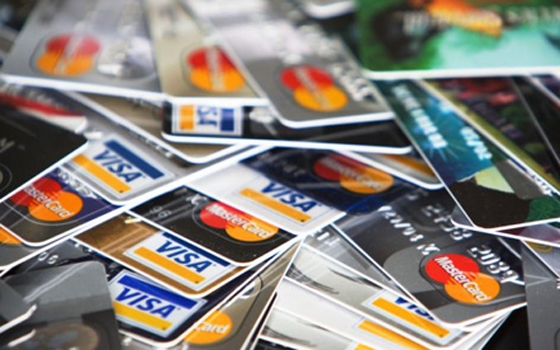Over the last ten years, the number of outstanding payment cards in Lebanon has been growing by a CAGR of 8% to reach 1.86 million by end 2012. Central Bank of Lebanon data shows that 96% of this total represents cards held by residents with the remaining 4% belonging to non-resident cardholders.
Somewhat surprising, is the card-type breakdown which reveals that 61% of total cards take the form of debit cards. Despite the general notion regarding Lebanese excessive spending habits, only 440 thousand credit cards (24% of total cards) were circulating the market in 2012. This is the equivalent of a 10% penetration rate using World Bank population estimates of 4.4 million for the same year. As for the remaining 15%, they are divided into charge cards (8%) and prepaid cards (7%).
Examining card transactions displays a similar picture, the latest data made available by BDL shows that cash withdrawals accounted for 67% of total transaction value worth $3.6 billion up till May 2012. Even though cash withdrawals remain twice as large as card purchases, the trend has been slowly declining from the elevated 78% share of withdrawals transacted in 2003.
In fact, card purchases have been growing at a CAGR of 21% from 2003 to reach $2.6 billion in 2011 while cash withdrawals have seen a CAGR of 14% to reach $5.7 billion during the same period. Combining purchases with withdrawals yields a total transacted value of $8.3 billion, a 15% CAGR increase since 2003. Residents constitute 99% of total value, 11% of which comes from resident spending outside Lebanon.
The growth in purchases is accompanied with a 5.2% CAGR increase in Point of Sale (POS) contracts which stood at 48,574 contracts as of 2011. The number of POS contracts acts as a key performance indicator, as the machine allows vendors to monitor transactions and forecast trends. More recent data shows that this number has increased to 49,944 as of May 2012.
Given that residents dominate the card payment market and that the majority of cards are used for cash withdrawal purposes, important inferences may be drawn from the distribution of ATM’s. Beirut and its suburbs, undoubtedly house the greatest number of ATM’s, jobs, and wealth. BdL data shows that 615 ATM’s are located in the capital, the equivalent of 43% of a total 1,433 ATM’s located in the country. Mount Lebanon, which comes in second with 420 ATM’s, has observed the greatest growth from the 152 ATM’s which were available in 2003.
Relatively untapped, the credit card market holds great growth prospects. Banks have put into place aggressive market segmentation strategies and are constantly introducing new credit card schemes. Bnooki.com, a website dedicated to simplifying banking services, identifies 157 different kinds of credit cards, each tailored to a specific audience and offering a spectrum of rewards. According to the information detailed on the site, the average monthly credit interest rate may vary from a low of 1.33% to a high of 3%. Interest rates differ according to the card’s annual subscription cost as well as whether the funds were withdrawn as cash or paid via POS. As for rewards, cardholders have the option to choose between insurance, cash back, air miles, as well as other points and discounts.
More recently, affinity and co-branded cards have gained popularity. While the large and growing educated student base of universities justifies the growth in affinity cards, the small size of companies and traders renders co-branded cards unfeasible. Surpassing this obstacle, in a truly innovative manner, BLOM Bank has launched its specialty “Beirut Traders Shopping Card.” The card, which is issued in partnership with the Beirut Traders Association targets all registered traders and in turn allows them to pass on loyalty benefits and discounts to their customers.
Credit card growth is not limited to resident users. With a large Lebanese diaspora, low non-resident penetration rate, and a national dependence on remittances, tapping into this market is a natural next step. Given their global presence, Lebanese banks are fittingly positioned to increase their lending activities. Exclusive services such as e-cash by BLOM Bank allow
Lebanese living abroad the luxury of transferring money online to their families back home through its large network of ATM’s.
Comparing the number of credit cards in Lebanon to that of developed countries shows how much room for growth still lies ahead. For example, according to “visual.ly” credit card penetration in the United States has reached up to 66% of the population with the average cardholder carrying 4.4 credit cards in 2012. However, given the difference in banking structure, population, and company, a country within Europe would be more suitable of a comparison. The UK Cards Association published that out of 169 million cards in issue during 2012, a majority 88.6 million were debit cards. Meanwhile, credit cards reached a penetration rate of 33%, three times that of Lebanon’s.
Interesting applications have been seen in developed countries where phones are being used as credit cards. While this technology is not expected to debut any time soon in Lebanon, our developed banking sector has proven capable of creating innovative payment solutions that are more suitable for its clientele.
The Lebanon Brief – BLOM Bank
3 August







































































